Charitha Madapatha
Chalmers University of Technology
Integrated Communication, Localization, and Sensing in 6G D-MIMO Networks
Mar 28, 2024



Abstract:Future generations of mobile networks call for concurrent sensing and communication functionalities in the same hardware and/or spectrum. Compared to communication, sensing services often suffer from limited coverage, due to the high path loss of the reflected signal and the increased infrastructure requirements. To provide a more uniform quality of service, distributed multiple input multiple output (D-MIMO) systems deploy a large number of distributed nodes and efficiently control them, making distributed integrated sensing and communications (ISAC) possible. In this paper, we investigate ISAC in D-MIMO through the lens of different design architectures and deployments, revealing both conflicts and synergies. In addition, simulation and demonstration results reveal both opportunities and challenges towards the implementation of ISAC in D-MIMO.
Beamforming in Wireless Coded-Caching Systems
Sep 11, 2023Abstract:Increased capacity in the access network poses capacity challenges on the transport network due to the aggregated traffic. However, there are spatial and time correlation in the user data demands that could potentially be utilized. To that end, we investigate a wireless transport network architecture that integrates beamforming and coded-caching strategies. Especially, our proposed design entails a server with multiple antennas that broadcasts content to cache nodes responsible for serving users. Traditional caching methods face the limitation of relying on the individual memory with additional overhead. Hence, we develop an efficient genetic algorithm-based scheme for beam optimization in the coded-caching system. By exploiting the advantages of beamforming and coded-caching, the architecture achieves gains in terms of multicast opportunities, interference mitigation, and reduced peak backhaul traffic. A comparative analysis of this joint design with traditional, un-coded caching schemes is also conducted to assess the benefits of the proposed approach. Additionally, we examine the impact of various buffering and decoding methods on the performance of the coded-caching scheme. Our findings suggest that proper beamforming is useful in enhancing the effectiveness of the coded-caching technique, resulting in significant reduction in peak backhaul traffic.
A Comparison between Network-Controlled Repeaters and Reconfigurable Intelligent Surfaces
Nov 13, 2022



Abstract:Network-controlled repeater (NCR) has been recently considered as a study-item in 3GPP Release 18, and the discussions are continuing in a work-item. In this paper, we introduce the concept of NCRs, as a possible low-complexity device to support for network densification and compare the performance of the NCRs with those achieved by reconfigurable intelligent surfaces (RISs). The results are presented for the cases with different beamforming methods and hardware impairment models of the RIS. Moreover, we introduce the objectives of the 3GPP Release 18 NCR work-item and study the effect of different parameters on the performance of NCR-assisted networks. As we show, with a proper deployment, the presence of NCRs/RISs can improve the network performance considerably.
Constrained Deployment Optimization in Integrated Access and Backhaul Networks
Oct 11, 2022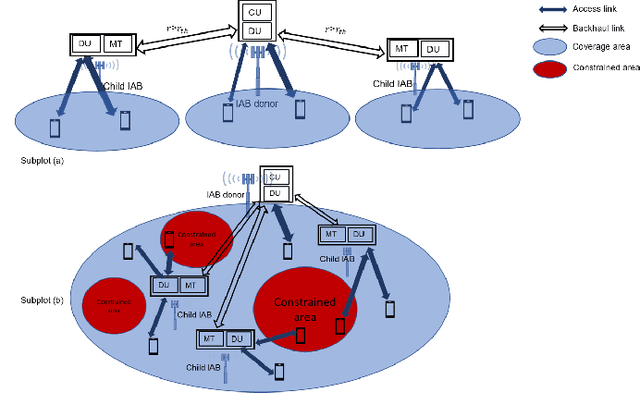
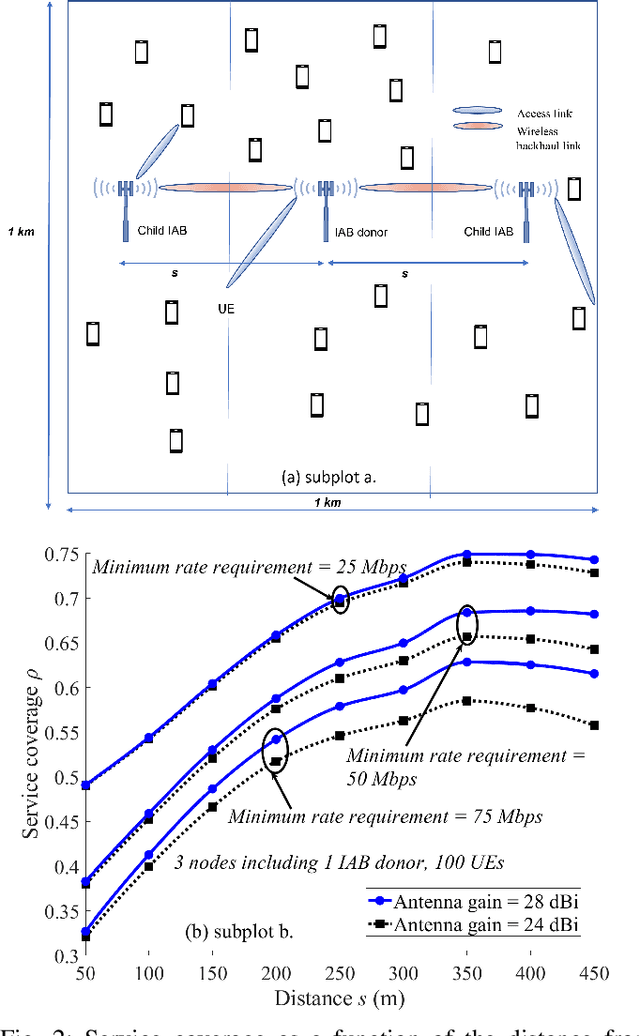
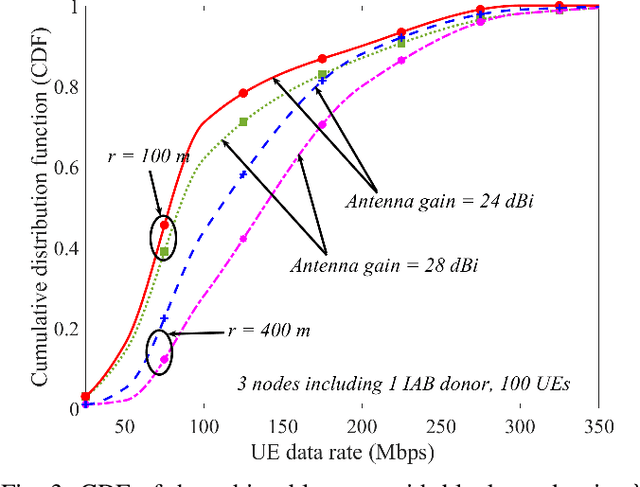
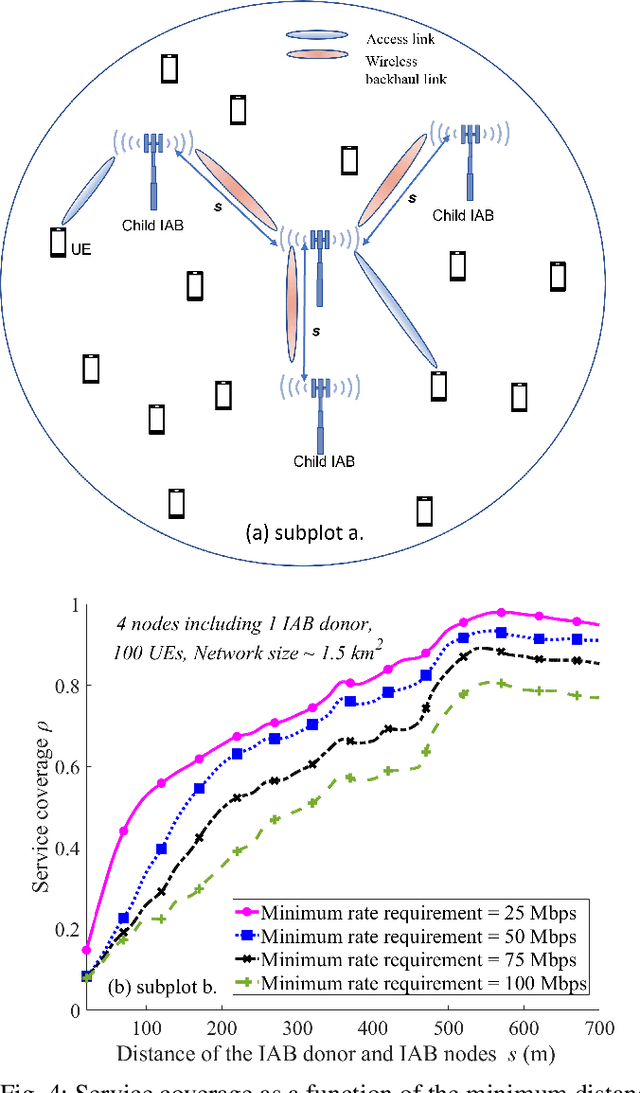
Abstract:Integrated access and backhaul (IAB) is one of the promising techniques for 5G networks and beyond (6G), in which the same node/hardware is used to provide both backhaul and cellular services in a multi-hop fashion. Due to the sensitivity of the backhaul links with high rate/reliability demands, proper network planning is needed to make the IAB network performing appropriately and as good as possible. In this paper, we study the effect of deployment optimization on the coverage of IAB networks. We concentrate on the cases where, due to either geographical or interference management limitations, unconstrained IAB node placement is not feasible in some areas. To that end, we propose various millimeter wave (mmWave) blocking-aware constrained deployment optimization approaches. Our results indicate that, even with limitations on deployment optimization, network planning boosts the coverage of IAB networks considerably.
Joint Scheduling and Throughput Maximization in Self-backhauled Millimeter Wave Cellular Networks
Jun 04, 2021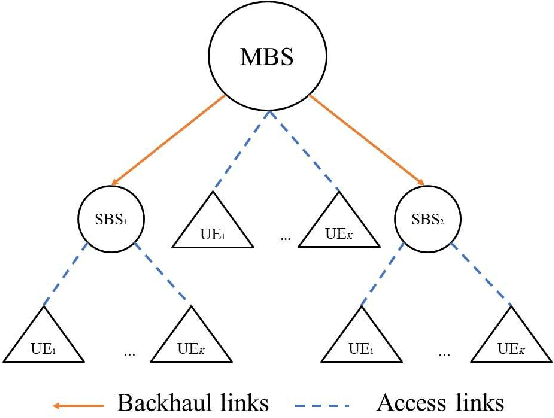
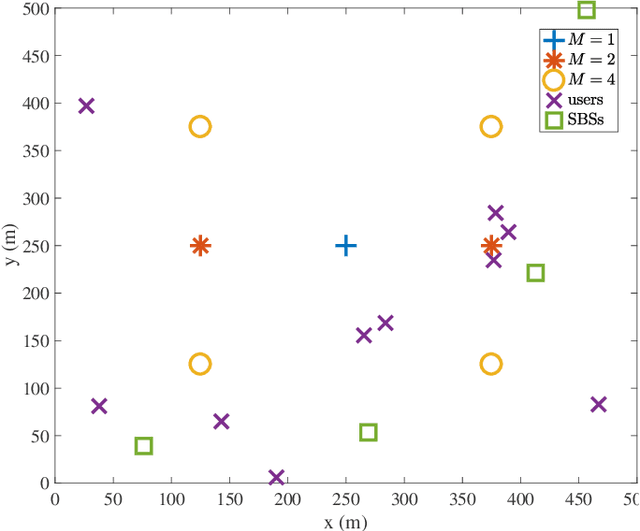
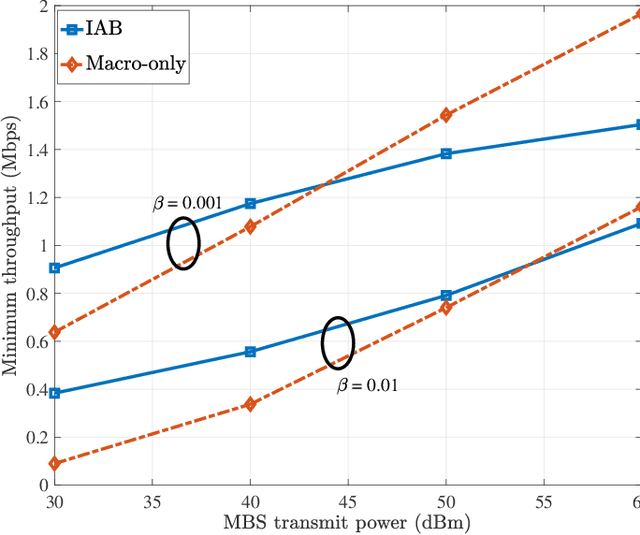
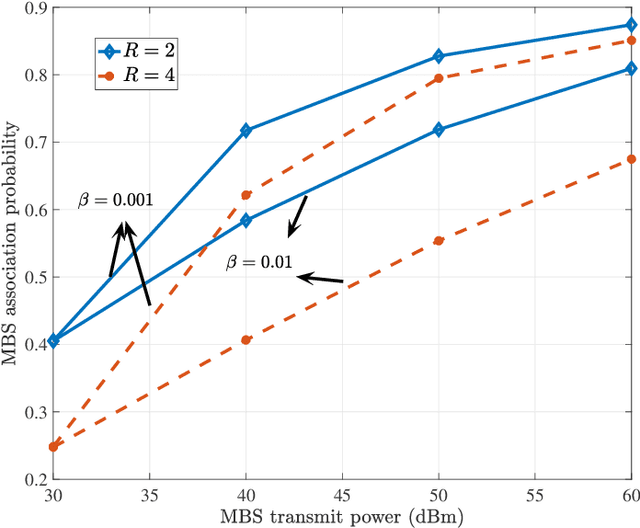
Abstract:Integrated access and backhaul (IAB) networks have the potential to provide high data rate in both access and backhaul networks by sharing the same spectrum. Due to the dense deployment of small base stations (SBSs), IAB networks connect SBSs to the core network in a wireless manner without the deployment of high-cost optical fiber. As large spectrum is available in mmWave bands and high data rate is achieved by using directional beamforming, the access and backhaul links can be integrated in the same frequency band while satisfying quality-of-service constraints. In this work, we optimize the scheduling of access and backhaul links such that the minimum throughput of the access links is maximized based on the revised simplex method. By considering a probability based line-ofsight (LOS) and non-line-of-sight (NLOS) path loss model and the antenna array gains, we compare the achievable minimum access throughput of the IAB network with the network with only macro base stations, and study the effect of the network topology and antenna parameters on the achievable minimum throughput. Simulation results show that, for a broad range of parameter settings, the implementation of IABs improves the access minimum achievable throughput.
On Topology Optimization and Routing in Integrated Access and Backhaul Networks: A Genetic Algorithm-based Approach
Feb 14, 2021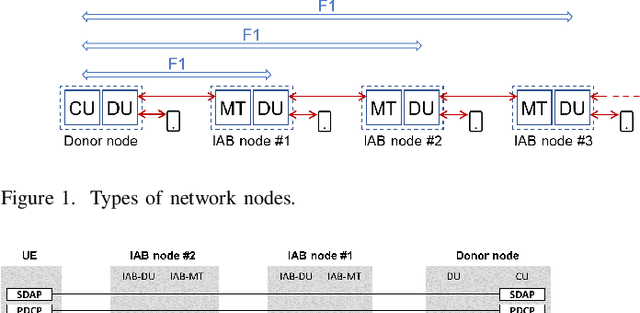
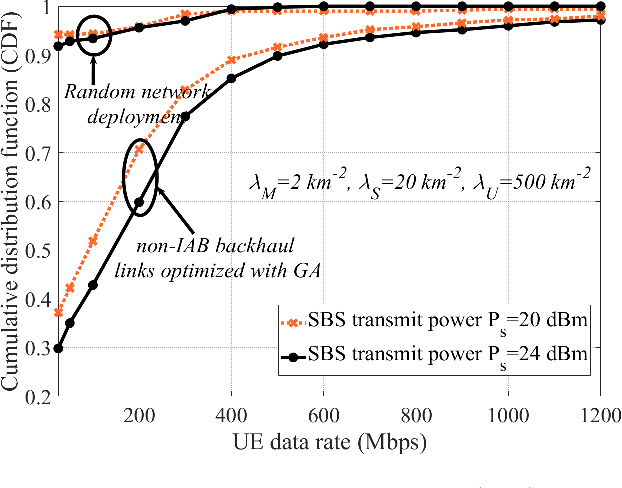
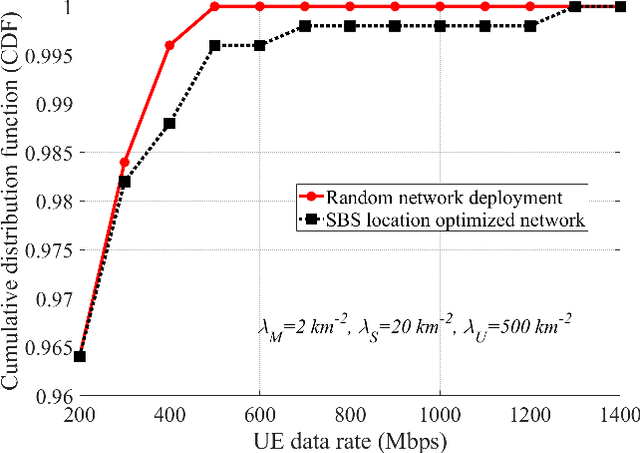
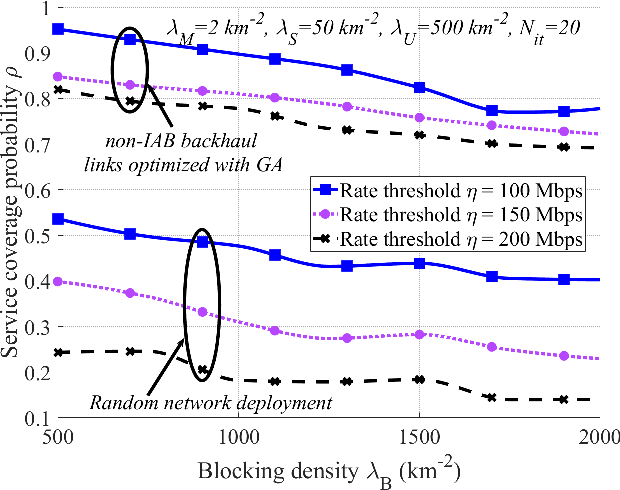
Abstract:In this paper, we study the problem of topology optimization and routing in integrated access and backhaul (IAB) networks, as one of the promising techniques for evolving 5G networks. We study the problem from different perspectives. We develop efficient genetic algorithm-based schemes for both IAB node placement and non-IAB backhaul link distribution, and evaluate the effect of routing on bypassing temporal blockages. Here, concentrating on millimeter wave-based communications, we study the service coverage probability, defined as the probability of the event that the user equipments' (UEs) minimum rate requirements are satisfied. Moreover, we study the effect of different parameters such as the antenna gain, blockage and tree foliage on the system performance. Finally, we summarize the recent Rel-16 as well as the upcoming Rel-17 3GPP discussions on routing in IAB networks, and discuss the main challenges for enabling mesh-based IAB networks. As we show, with a proper network topology, IAB is an attractive approach to enable the network densification required by 5G and beyond.
 Add to Chrome
Add to Chrome Add to Firefox
Add to Firefox Add to Edge
Add to Edge